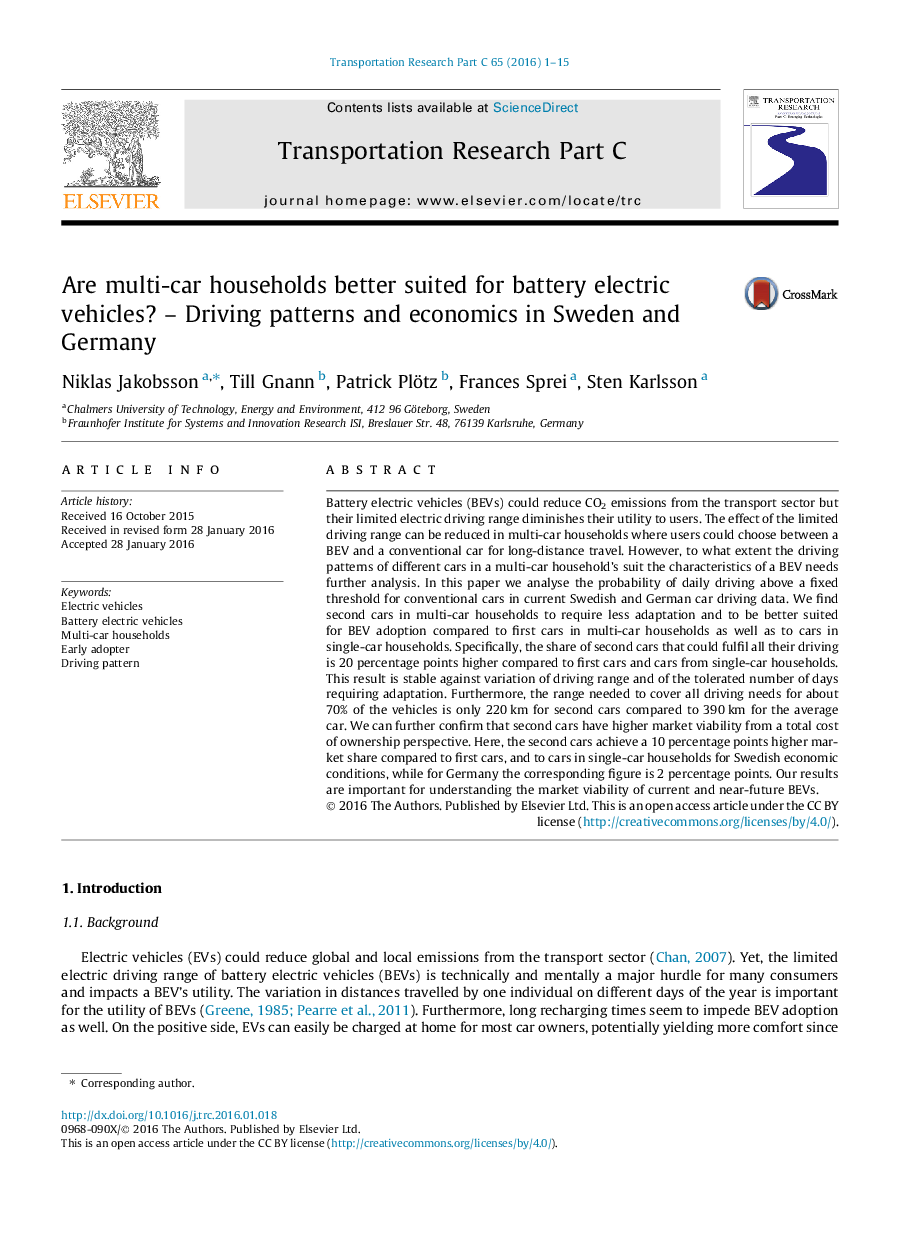| کد مقاله | کد نشریه | سال انتشار | مقاله انگلیسی | نسخه تمام متن |
|---|---|---|---|---|
| 6936469 | 868861 | 2016 | 15 صفحه PDF | دانلود رایگان |
عنوان انگلیسی مقاله ISI
Are multi-car households better suited for battery electric vehicles? - Driving patterns and economics in Sweden and Germany
ترجمه فارسی عنوان
آیا خانواده های ماشین چند منظوره برای وسایل الکتریکی باتری مناسب تر هستند؟ - الگوهای رانندگی و اقتصاد در سوئد و آلمان
دانلود مقاله + سفارش ترجمه
دانلود مقاله ISI انگلیسی
رایگان برای ایرانیان
کلمات کلیدی
وسایل نقلیه الکتریکی، وسایل الکتریکی باتری، خانواده های چند خانواده، زودگذر، الگوی رانندگی،
موضوعات مرتبط
مهندسی و علوم پایه
مهندسی کامپیوتر
نرم افزارهای علوم کامپیوتر
چکیده انگلیسی
Battery electric vehicles (BEVs) could reduce CO2 emissions from the transport sector but their limited electric driving range diminishes their utility to users. The effect of the limited driving range can be reduced in multi-car households where users could choose between a BEV and a conventional car for long-distance travel. However, to what extent the driving patterns of different cars in a multi-car household's suit the characteristics of a BEV needs further analysis. In this paper we analyse the probability of daily driving above a fixed threshold for conventional cars in current Swedish and German car driving data. We find second cars in multi-car households to require less adaptation and to be better suited for BEV adoption compared to first cars in multi-car households as well as to cars in single-car households. Specifically, the share of second cars that could fulfil all their driving is 20 percentage points higher compared to first cars and cars from single-car households. This result is stable against variation of driving range and of the tolerated number of days requiring adaptation. Furthermore, the range needed to cover all driving needs for about 70% of the vehicles is only 220Â km for second cars compared to 390Â km for the average car. We can further confirm that second cars have higher market viability from a total cost of ownership perspective. Here, the second cars achieve a 10 percentage points higher market share compared to first cars, and to cars in single-car households for Swedish economic conditions, while for Germany the corresponding figure is 2 percentage points. Our results are important for understanding the market viability of current and near-future BEVs.
ناشر
Database: Elsevier - ScienceDirect (ساینس دایرکت)
Journal: Transportation Research Part C: Emerging Technologies - Volume 65, April 2016, Pages 1-15
Journal: Transportation Research Part C: Emerging Technologies - Volume 65, April 2016, Pages 1-15
نویسندگان
Niklas Jakobsson, Till Gnann, Patrick Plötz, Frances Sprei, Sten Karlsson,
